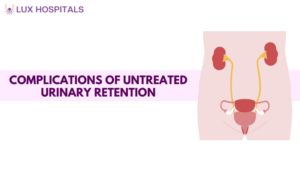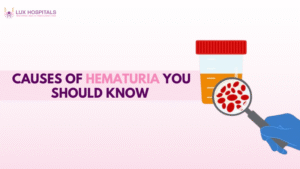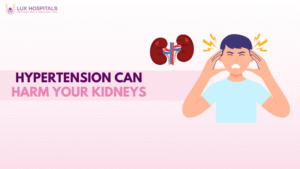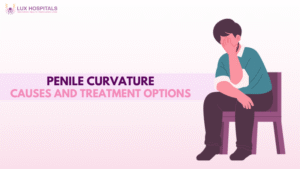How to Differentiate Interstitial Cystitis vs UTI

If you’re experiencing persistent bladder pain, frequent urination, or discomfort, you might wonder whether you have a urinary tract infection (UTI) or interstitial cystitis (IC). While both conditions share some symptoms, they are distinct health issues requiring different treatments. Understanding the key differences between cystitis and UTI can help you seek the proper care and manage your symptoms effectively.
What is an Urinary Tract Infection?
A urinary tract infection (UTI) is a bacterial infection that affects any part of the urinary system, including the bladder, urethra, or kidneys. It occurs when bacteria from the digestive system—typically Escherichia coli or E. coli—enter the urinary tract. Because women’s urethras are shorter than men’s, bacteria can more easily enter the bladder, increasing the risk of UTIs.
Common Urinary Tract Infection Symptoms:
- When urinating, a burning feeling
- Urinating frequently and in tiny amounts
- Urine that is murky or smells strongly
- Pain in the pelvis, particularly in women
- chills or fever (if the kidneys have been affected by the illness)
- Hematuria, or blood in the urine
Following a urinalysis and bacterial culture test, antibiotics are usually administered to treat urinary tract infections.
What is Interstitial Cystitis?
A persistent illness called interstitial cystitis sometimes referred to as painful bladder syndrome, causes frequent urination, pressure, and pain in the bladder. Unlike UTIs, interstitial cystitis is not bacterial in origin and is not treated with drugs. Interstitial cystitis is thought to be caused by an immunological reaction, nerve malfunction, or bladder inflammation, while the precise reason is unknown.
Common Interstitial Cystitis Symptoms:
- Persistent pelvic pain or discomfort
- urge to urinate despite not having a full bladder
- Urinating frequently throughout the day (40–60 times per day in a severe case)
- Increased discomfort when the bladder is full and decreased discomfort upon voiding
- Sex that hurts
- Antibiotics don’t work
The symptoms of interstitial cystitis can be unpredictable, with exacerbation by stress, specific foods, or hormonal fluctuations.
Key Differences Between Cystitis vs UTI
Feature | Urinary Tract Infection (UTI) | Interstitial Cystitis (IC) |
Cause | Bacterial infection | Non-infectious, possibly autoimmune or nerve-related |
| Pain Type | Pain on urination, burning sensation | Bladder or chronic pelvic pain |
Frequency of Urination | More frequent but usually moderate | Worse, even when the bladder is not full |
Fever and Chills | Present (if the infection becomes systemic) | Absent |
Response to Antibiotics | Symptoms improve with antibiotics | No symptom relief with antibiotics |
Triggers | Poor hygiene, diet, stress, hormonal changes, bacterial infection |
How to Get the Right Diagnosis
If you suspect a UTI, your doctor will likely perform a urinalysis to check for bacteria and white blood cells. A urine culture can pinpoint the precise bacteria causing the infection and confirm its existence.
Diagnosing suspected interstitial cystitis vs a UTI is more difficult. Due to the lack of a conclusive test for IC, physicians employ a mix of
- Medical history and symptom review
- Urinalysis (to rule out infection)
- Cystoscopy (a procedure using a camera to examine the bladder)
- Bladder biopsy (in some cases to check for other bladder disorders)
- Potassium sensitivity test (used to assess bladder lining sensitivity)
Treatment Options for UTI vs. IC
Urinary Tract Infection Treatment:
- Antibiotics: The bacterial culture results are used to recommend the primary treatment.
- Hydration: Drinking plenty of water helps flush bacteria out of the urinary tract.
- Pain relievers: Over-the-counter medications like ibuprofen can ease discomfort.
- Cranberry juice or supplements: Some studies suggest they may help prevent recurrent UTIs.
Interstitial Cystitis Treatment:
Since interstitial cystitis does not have a cure, treatment focuses on symptom management:
- Dietary modifications: Avoiding acidic foods, caffeine, alcohol, and spicy foods can help reduce flare-ups.
- Bladder training: Gradually increasing the time between urinations to train the bladder.
- Medications: Prescription drugs such as pentosan polysulfate sodium (Elmiron) may help protect the bladder lining.
- Physical therapy: Helps relieve pelvic floor dysfunction and reduce bladder pain.
- Nerve stimulation therapy: Some patients benefit from procedures that regulate nerve signals to the bladder.
When to See a Doctor
- Consult a doctor if you experience frequent UTIs or symptoms that persist despite antibiotics.
- If you have chronic bladder pain, urinary urgency, or unexplained pelvic discomfort, ask about interstitial cystitis treatment.
- If you notice blood in your urine, fever, or severe pain, seek medical attention immediately, as these may indicate a more serious condition.
Conclusion
Managing interstitial cystitis correctly requires being able to distinguish it from a UTI. In contrast to interstitial cystitis, a chronic illness requiring ongoing care, UTIs are bacterial infections that usually go away with antibiotics. You shouldn’t disregard symptoms like discomfort, frequent urination, or chronic bladder pain. See a doctor for a precise diagnosis and individualized treatment if your symptoms don’t go away after treatment. Effective symptom management and enhanced general well-being can be achieved with early intervention.
Frequently Asked Questions
Bacteria cause a urinary tract infection (UTI). It is treated with antibiotics, whereas interstitial cystitis (IC) is a chronic condition with no bacterial infection and requires long-term symptom management.
The fastest way to get rid of cystitis is to drink plenty of water, take prescribed antibiotics (for bacterial cystitis), and avoid irritants like caffeine and spicy foods.
If your symptoms, such as frequent urination, bladder pain, and urgency, persist despite taking antibiotics, you may have interstitial cystitis rather than a UTI. Consulting a doctor for proper testing is essential.
No, a UTI does not cause interstitial cystitis. However, frequent UTIs can cause bladder irritation, which may resemble IC symptoms.
There is no cure for interstitial cystitis, but symptoms can be managed with lifestyle changes, medications, and therapy.
See a doctor if you have persistent bladder pain, frequent urination that doesn’t improve with treatment, blood in urine, fever, or severe discomfort.
Yes, interstitial cystitis and UTIs share similar symptoms like frequent urination and bladder pain, but bacteria do not cause IC and do not improve with antibiotics.
Avoid acidic, spicy, and caffeinated foods like coffee, citrus fruits, alcohol, and artificial sweeteners, as they can trigger interstitial cystitis symptoms.




















